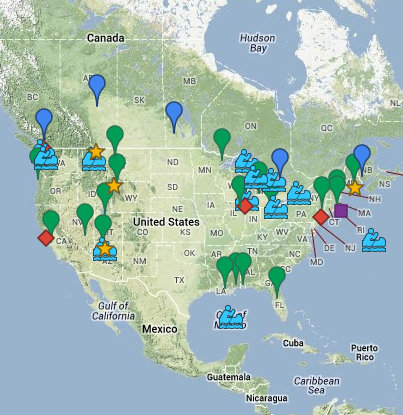Monday, February 29, 2016
Nellita Creek
It's getting harder and harder to imagine what this site looked like just six years ago - when 400' of timber bulkhead marked the shoreline and the channelized creek flowed over the bulkhead in a flume. The small estuary that was created behind the old bulkhead line is smaller than it started, since a lot of sediment came down the stream in the first couple of years, but it still represents new wetland, brackish marsh, and low gradient stream habitat. Salt marsh is establishing near the creek mouth and the forest is rapidly taking over the rest of the site.
AERIAL VIEW
The beach still seems to be naturally starved of sediment to me, and the restored spit has a strange appearance (look at the aerial), but all the pieces are in place and with time they will sort themselves into something that looks like it always belonged.
This is my fourth visit - you've got to go back to the 2009 post to see what it looked like before:
Nellita Creek: October 2011
Nellita: January 2010
S. of Frenchman's Cove: May 2009
By the way, this is part of the Stavis NRCA (WDNR's Natural Resource Conservation Area), since I realized I had never used that name in these posts. I'm still not even sure that Nellita Creek is really the correct name - or if it is, that I've spelled it right!
Labels:
hood canal,
kitsap,
puget sound,
restoration,
salish sea,
washington
Location:
Washington, USA
Lynch Cove
I'm not really sure what happened, but this is the first post in three months. The first since that beautiful day on Whidbey right after Thanksgiving. It's not that I haven't been to the beach, although those few trips have tended to be pretty gray and uninspiring. And it's not that there haven't been some interesting stories, but maybe the narrative and the photos weren't lining up. Or maybe I've been preoccupied with other stuff and let things slide! The next few posts will be a ragged attempt to get back on track.
We'll start here in Belfair, at the far tip of Hood Canal, way back in mid-December. The site isn't even a beach - too little sand and gravel, too few waves. But it's a neat salt marsh restoration project and has been in the on-deck pile ever since.
The large marsh complex at the mouth of the Union River is not unlike others found at the heads of inlets (Discovery Bay, Totten Inlet, and so forth). I guess on the delta ternary, it's mainly "tide", with a little "river," and almost no "waves." Like many historically drained ("pasturized?") marshes, this was an opportunity to pull out some dikes and allow the tides and the salt water back in. As elsewhere, there were challenges in deciding how much dike to remove, whether new dikes have to be built landward, how to maintain public access (there's a wonderful trail and boardwalk system here), and whether to recreate channels or let them figure themselves out. The current Google Maps aerial below shows the site under construction - a more recent image would show a remarkable network of s-shaped channels.
AERIAL VIEW
One thing that makes this marsh interesting to me is that its been subject to significant elevation changes - possibly rapid uplift associated with earthquakes, followed by more gradual subsidence. The story has been best worked out here in the marshes of Lynch Cove, but I suspect the story also helps explain the terraced appearance of much of the south arm of Hood Canal.
Labels:
hood canal,
mason,
puget sound,
restoration,
salish sea,
washington
Location:
Shelton, WA, USA
Subscribe to:
Posts (Atom)








